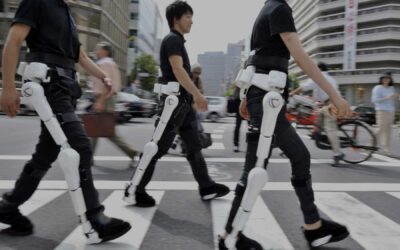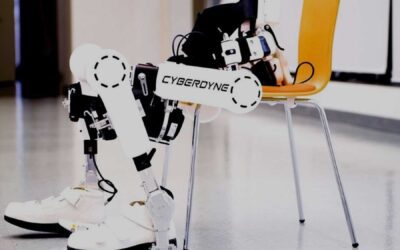Spinal Cord Injury is quite a common cause of acquired disability around the world. The medical field has seen considerable changes in the last few years, but, with the numerous breakthroughs in technology, healthcare has reached new heights.
The Hybrid Assistive Limb, HAL® – is the world’s first technology that enhances and regenerates the wearer’s physical functions according to the wearer’s intentions. It is called The Wearable Cyborg™
Cyberdyne Treatment uses HAL to restore the functions of the wearer. HAL improves the function of the wearer. HAL targets spinal cord injury, stroke, neuromuscular diseases, and more. The effect of this treatment method to promote functions of the lower limb, upper limb, and body trunk is reported through clinical applications.
How HAL work?

The brain sends a signal to the muscle to command the movement made by an individual. At that time, a very faint signal that reflects the wearer’s intention to move appears on the skin’s surface. Using its sensors attached to the skin’s surface, HAL® detects these bio-electrical signals to perform the desired movements with the wearer’s voluntary commands.
Cyberdyne’s Robotic device is well-suited to assist in this area, based on HAL’s ability to carry out simple, repetitive tasks with consistency. Robots can be programmed to guide a patient through a series of specific motions while maintaining a prescribed level of support and restricting undesired movements.
Restoration-
Cyberdyne treatment provides advanced rehabilitation technologies for the well-being of patients with spinal cord injuries, around the world. The Wearable Cyborg™ HAL is also considered to accelerate motor learning of the brain which eventually leads to the neuroplasticity of the brain functions.
The purpose of HAL® is to create an ideal future by researching, developing, and manufacturing innovative Cybernics systems, with a focus on improving medicine, welfare, and daily life. An important part of robotic technology research in Cyberdyne treatment is involved with ‘lower extremity rehabilitation, especially useful in spinal cord injuries.
When HAL® completes assisting the intended movement, the feeling is fed back to the brain. Active use of the neural pathways for voluntary movement with physical feedback to the brain leads to an important ability for the wearer to walk on their own.
Mobility by HAL:

Rehabilitation robots in physical therapy ensure that exercises are performed properly. They often help to support the patient’s body weight so that patients can participate for longer periods before tyring. They measure improvements and provide objective reporting and assessment. Intelligent, motor-driven devices for rehabilitation, or rehabilitation robotics, represent an exciting frontier with considerable potential to address the concerns.
Puschel’s Storey
“I need to be able to walk in my daughter’s wedding. The first time I got on it, I thought “This is going to be great” I am going to be able to walk, but No! It was very difficult but super awesome. Initially, the robot was having to do all the work for me. Every time I got in the robot I was able to do a little more until I was able to just do it on my own. When it came time to walk at my daughter’s wedding, I was able to walk with a walker down the aisle.”
Log onto https://rehabmodalities.com/ to understand the science of motor function and neural connections through Cyberdyne’s Wearable Cyborg™ HAL®



